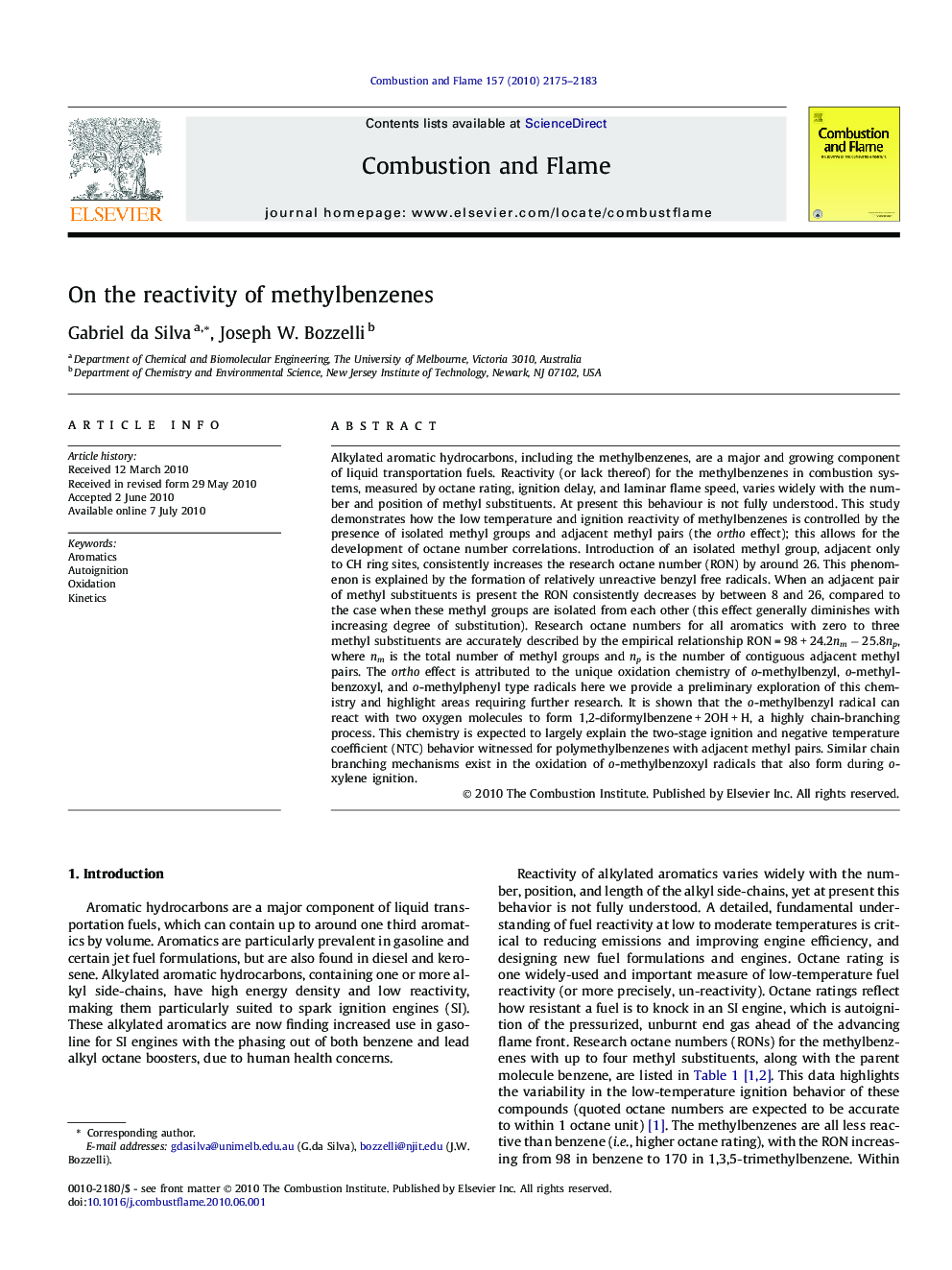| کد مقاله | کد نشریه | سال انتشار | مقاله انگلیسی | نسخه تمام متن |
|---|---|---|---|---|
| 166689 | 457803 | 2010 | 9 صفحه PDF | دانلود رایگان |

Alkylated aromatic hydrocarbons, including the methylbenzenes, are a major and growing component of liquid transportation fuels. Reactivity (or lack thereof) for the methylbenzenes in combustion systems, measured by octane rating, ignition delay, and laminar flame speed, varies widely with the number and position of methyl substituents. At present this behaviour is not fully understood. This study demonstrates how the low temperature and ignition reactivity of methylbenzenes is controlled by the presence of isolated methyl groups and adjacent methyl pairs (the ortho effect); this allows for the development of octane number correlations. Introduction of an isolated methyl group, adjacent only to CH ring sites, consistently increases the research octane number (RON) by around 26. This phenomenon is explained by the formation of relatively unreactive benzyl free radicals. When an adjacent pair of methyl substituents is present the RON consistently decreases by between 8 and 26, compared to the case when these methyl groups are isolated from each other (this effect generally diminishes with increasing degree of substitution). Research octane numbers for all aromatics with zero to three methyl substituents are accurately described by the empirical relationship RON = 98 + 24.2nm − 25.8np, where nm is the total number of methyl groups and np is the number of contiguous adjacent methyl pairs. The ortho effect is attributed to the unique oxidation chemistry of o-methylbenzyl, o-methylbenzoxyl, and o-methylphenyl type radicals here we provide a preliminary exploration of this chemistry and highlight areas requiring further research. It is shown that the o-methylbenzyl radical can react with two oxygen molecules to form 1,2-diformylbenzene + 2OH + H, a highly chain-branching process. This chemistry is expected to largely explain the two-stage ignition and negative temperature coefficient (NTC) behavior witnessed for polymethylbenzenes with adjacent methyl pairs. Similar chain branching mechanisms exist in the oxidation of o-methylbenzoxyl radicals that also form during o-xylene ignition.
Journal: Combustion and Flame - Volume 157, Issue 11, November 2010, Pages 2175–2183